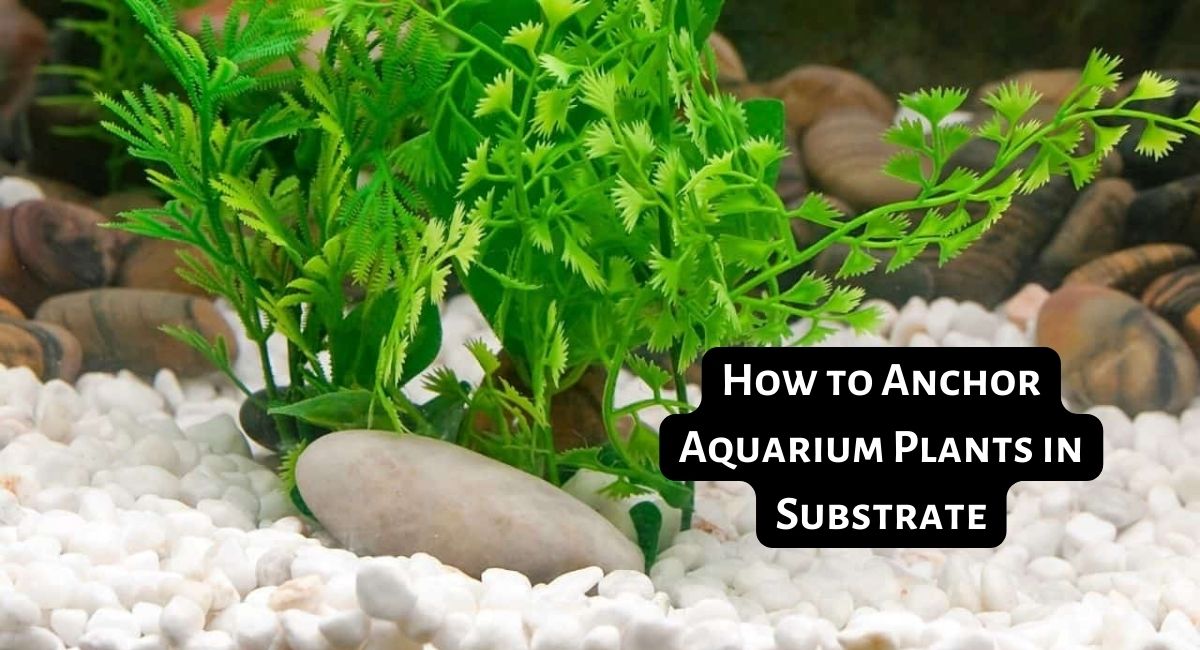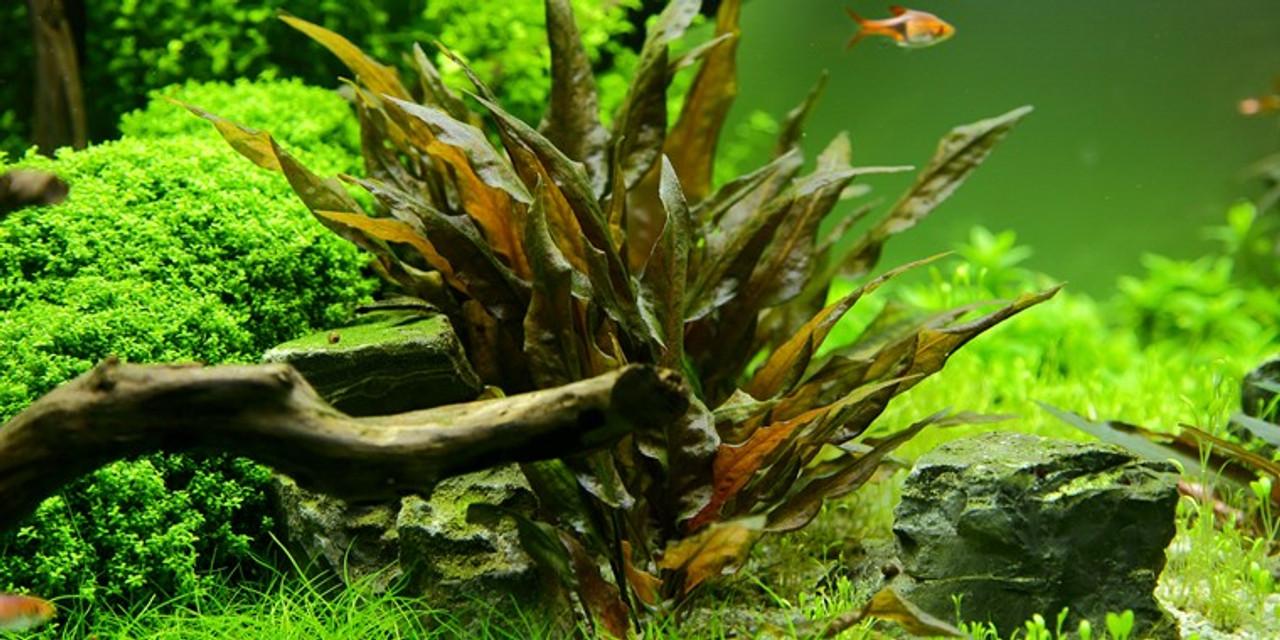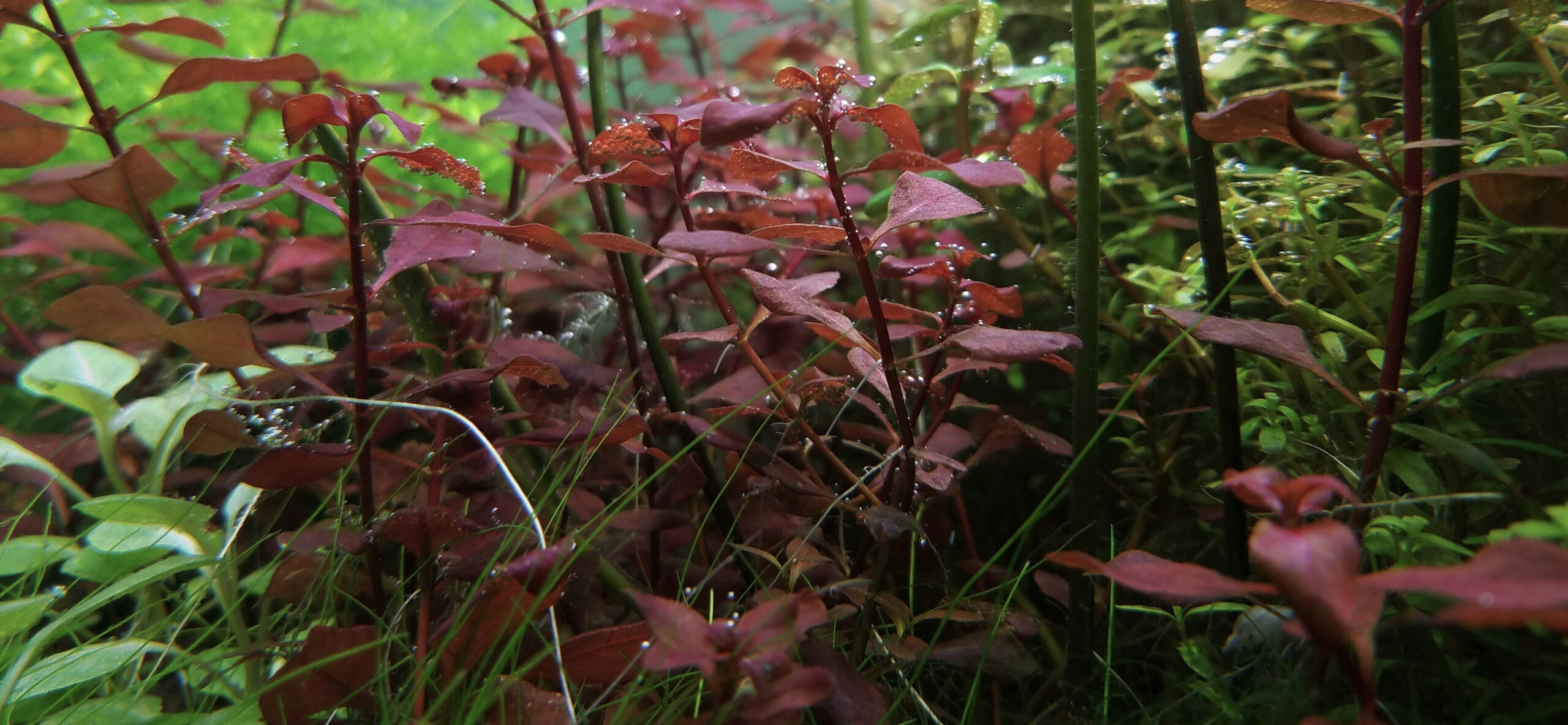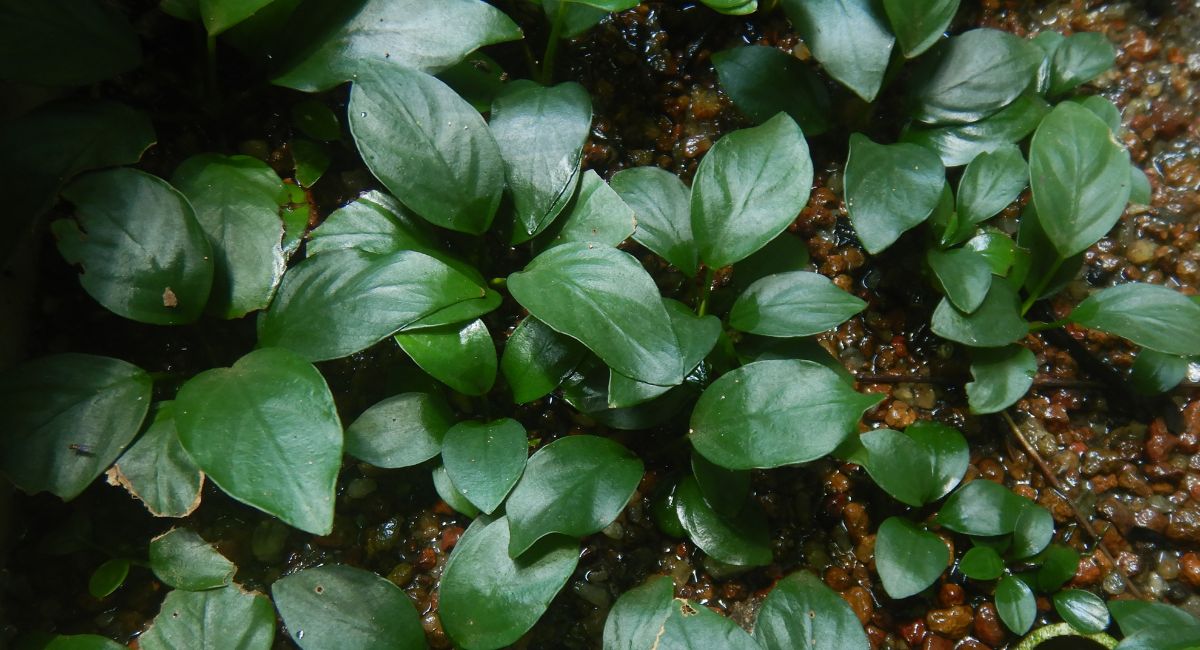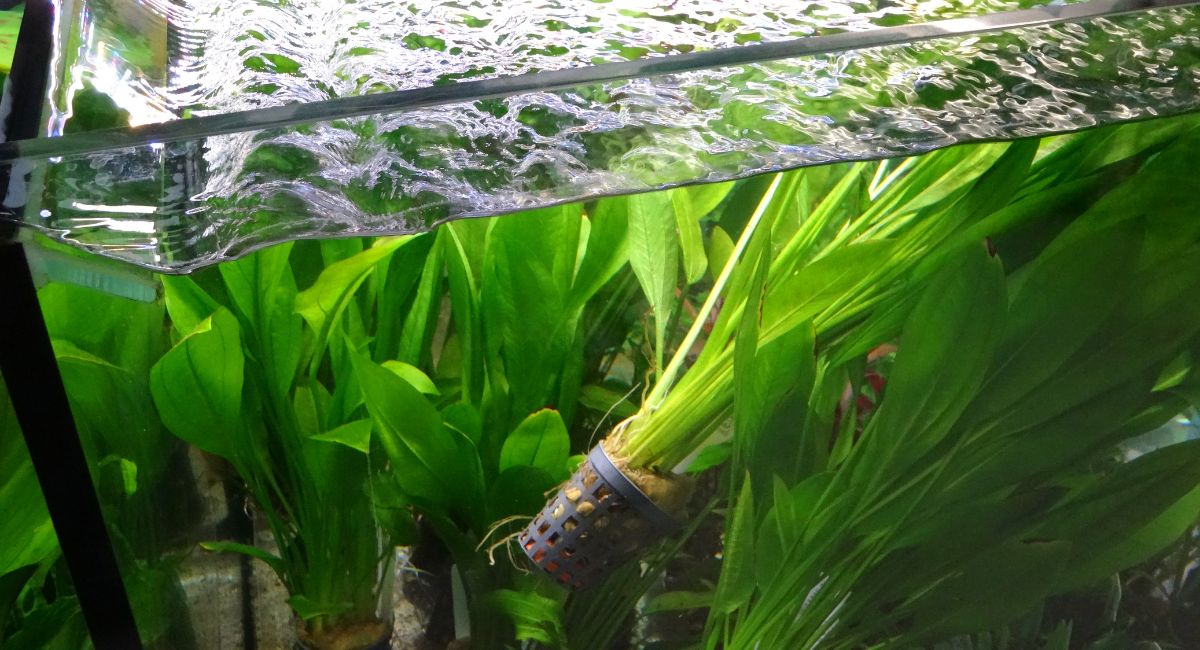Smartplantedaquarium.com participates in affiliate marketing programs. We may earn commissions on purchases made through our affiliate links. This doesn't affect our content or recommendations and we only recommend products we would put in our own tanks.
Are you wondering how to anchor aquarium plants in substrate of your tank? Aquarium plants provide a variety of benefits, including creating an aesthetically pleasing look and oxygenating the water. Properly anchoring these plants is important so they remain secure and can thrive in their environment. Fortunately, there are several ways that aquarium hobbyists can anchor their plants in the substrate. This blog will outline the different methods for anchoring aquarium plants, provide tips on choosing the right type of substrate, and offer advice on how to ensure your plants stay secure over time.
Keep reading for more information about how to properly anchor aquarium plants in your tank!
Why do Some Aquarium plants need to be anchored?
Contents
How to Anchor Aquarium Plants in Substrate
Anchoring aquarium plants in the substrate is essential to ensure that they remain in place and can grow and spread without being uprooted by water currents, fish, or other tank inhabitants. Below are some popular methods to anchor aquarium plants in the substrate.
When anchoring plants, remember to be gentle and avoid damaging their roots. Some plants take time to establish themselves, so be patient and allow them to grow and anchor naturally. It’s also important to note that not all plants need to be anchored; some prefer to float or can be attached to surfaces without being planted in the substrate.
Using Plant Weights
Plant weights are small, heavy pieces of safe metal (often lead-free) that you can wrap around the base of a plant to weigh it down. Once the plant roots grow and anchor themselves into the substrate, you can remove the weight.
Hold the base of the plant, ensuring you include a portion of the stem or roots. Gently wrap the plant weight around the base of the plant. Ensure it’s snug, but not so tight that it damages the plant. Depending on the design of the weight, you might simply press it around the plant’s base or twist it slightly.
Push the plant into the substrate until the weight is fully buried. Depending on the plant type and your design, you might want the weight to be just beneath the surface or a little deeper.
Tips
- Safety: Ensure the plant weights are lead-free. Some older or cheaper weights may contain lead, which can be toxic to fish and other aquatic life. Always choose weights that are labeled as safe for aquarium use.
- Alternative to Weights: If you don’t have plant weights, you can also use small, aquarium-safe stones or pieces of tile to anchor plants. Just tie the plants to the stone with a piece of thread, and then bury the stone in the substrate.
- Duration: Over time, as the plant establishes a strong root system, the weight may become redundant. However, it’s often not necessary to remove them unless you have a specific reason to do so.
Hairnet Method
The hairnet method is a unique technique used primarily for planting carpeting plants or plants that tend to spread out horizontally across the substrate. Carpeting plants can be tricky to plant because of their fine roots and small size, which makes them prone to being uprooted by water currents or tank inhabitants. The hairnet method provides a solution to this problem.
Spread the hairnet flat over the area of the aquarium where you want the carpeting plants to grow. Using aquascaping tweezers or your fingers, take a small bunch or individual plantlet of the carpeting plant.
Push the plant through one of the holes in the hairnet so that the roots are below the net and the leaves or stems are above it. The hairnet will act as a barrier, holding the plant in place. Continue this process, spacing out the plants as desired across the area you want to carpet.
Once all the plants are in place, gently push the edges of the hairnet into the substrate, burying them to keep the net in place. Optionally, you can place small stones or other weights at the edges of the hairnet to ensure it stays in position.
Tips
- Safety: Ensure the hairnet or mesh you use is free from chemicals or dyes that could leach into the water. It’s best to use a plain, undyed hairnet.
- Growth: The hairnet method allows for even growth across the carpeting area, ensuring that all sections of the plant have equal access to light and nutrients.
Planting in Small Containers
Some aquarists plant their aquatic plants in small containers filled with substrate. These containers can then be buried in the main substrate of the aquarium. This allows for easier maintenance and rearrangement.
Using aquascaping tweezers or your fingers, create a small hole in the substrate within the container. Insert the plant into the hole, ensuring the roots are well buried. Gently pat down the substrate around the plant to hold it in place.
Once planted, you can position the containers within your aquarium. You can either bury them partially in the main substrate of the aquarium so they appear as if the plants are growing directly from the main substrate, or you can leave them fully exposed for a unique, tiered look.
Tips
- Benefits: Using containers can also be beneficial if you’re growing plants that require a different type of substrate from the main tank substrate. For example, you might have a sand substrate in your tank but want to grow plants that thrive in a richer soil. By using containers, you can provide that special soil for those plants without changing the substrate of the entire tank.
- Appearance: Over time, as plants grow and spread, they can often cover the appearance of the container, giving a natural look.
- Rearrangement: One of the main advantages of this method is the ease of rearrangement. If you decide you want to change the look of your aquarium or need to move plants around, you can do so without uprooting them, simply by moving the containers.
Planting Mats
Planting mats, also known as plant grids or mesh squares, are convenient tools for planting certain types of aquarium plants, especially those that spread horizontally like carpeting plants or mosses. The mat provides a stable base for the plants, allowing them to anchor and spread evenly across the substrate.
For mosses, spread them thinly and evenly across the mat. Ensure that the moss pieces penetrate through the holes of the mesh so they’re held in place. For carpeting plants, insert the roots or rhizomes of the plants through the holes in the mat, ensuring they’re securely anchored.
You don’t need to cover the entire mat with plants initially. Over time, the plants will grow and spread to cover the entire surface. Gently press the mat into the substrate to anchor it. You can use aquascaping tweezers or your fingers to do this.
Tips
- Advantages: Planting mats make it easier to create a uniform carpeting effect in the aquarium. They also help prevent plants from floating up or being dislodged by fish or water currents.
- Selection: When choosing a mat, ensure it’s made of aquarium-safe materials. Some mats are pre-seeded with plants, making the planting process even easier.
- Rearrangement: Another advantage of using planting mats is that they allow for easier rearrangement of plants. If you decide to change the look of your aquarium, you can simply lift and move the mat without uprooting individual plants.
- Natural Look: Over time, as the plants grow and spread, they’ll cover the mat entirely, creating a natural-looking carpet of greenery on the aquarium floor.
Plant Glue
There are special glues available that are safe for aquariums. You can use these glues to attach plants to rocks, driftwood, or other decorations. Once attached, you can place the decoration in the substrate, effectively anchoring the plant.
Apply a small amount of the aquarium-safe glue to the area of the surface where you want to attach the plant. Be cautious not to use too much; a little goes a long way. For gel-type glues, you might need to wait a few seconds after application for it to become tacky.
Press the plant onto the glued area. If you’re working with a small or delicate plant, tweezers can be helpful for this step. Hold the plant in place for a few seconds to ensure a good bond. The glue will typically set quickly when submerged in water.
Tips
- Safety: Always ensure the glue you’re using is aquarium-safe. Many plant glues are cyanoacrylate-based, which is safe for fish and plants when fully cured. However, always avoid glues with added anti-microbial agents or other chemicals.
- Curing Time: Although many aquarium glues set quickly, they may take longer (up to 24 hours) to fully cure. It’s usually safe to submerge glued items immediately, but be gentle with them for the first day.
- Uses: Beyond plants, aquarium-safe glue can also be used to attach corals in marine tanks or to bond rocks and other decorations.
- Alternative: If you don’t have plant glue, aquarium-safe super glue (which is also typically cyanoacrylate-based) can be used in a pinch.
Tying Plants to Decorations
Tying plants to decorations, such as rocks or driftwood, is a common method used in aquascaping, especially for plants that prefer to anchor onto surfaces rather than root in substrate. This technique is particularly popular for epiphytic plants like Anubias, Java Fern, and various mosses.
Using the fishing line, cotton thread, or thin wire, start wrapping it around the plant’s base and the decoration. Make sure it’s secure but not so tight that it damages the plant. Tie a knot to secure the plant in place. If using fishing line, ensure the knot is tight since it can be slippery. Trim off any excess line or thread with scissors.
Tips
- Thread Choice: Cotton thread is a popular choice because it’s biodegradable. After several weeks, it will naturally break down in the water. By the time it decomposes, the plant should be anchored securely. Fishing line is almost invisible in the water, making it a preferred choice for those who want a cleaner look immediately after planting.
- Plant Growth: Some plants, especially mosses, will grow around and cover the thread or line, making it invisible over time.
- Tying Technique: The method and tightness of tying will vary based on the plant type. For instance, mosses might require a crisscross pattern to ensure they stay flat and spread evenly, while larger plants like Anubias might just need a simple tie around their rhizome.
Using Root Tabs
Root tabs are nutrient-rich pellets or tablets that are placed in the substrate of an aquarium to provide essential nutrients to aquatic plants. They are especially useful in tanks where the substrate itself doesn’t contain sufficient nutrients for plant growth. Root tabs can be a game-changer for heavy root feeders like Amazon Swords, Cryptocorynes, and certain Vallisnerias.
Using aquascaping tweezers or your fingers, push a root tab into the substrate near the base of the plant. It should be deep enough that it’s near the plant’s roots but not so deep that the nutrients won’t be accessible.
Typically, placing them about 1-2 inches deep is appropriate. Ensure the root tab is fully buried to prevent it from being exposed, which could lead to unwanted algae growth from the released nutrients.
Tips
- Safety: Ensure any root tabs you use are safe for all inhabitants of your aquarium. Some root tabs may contain ingredients that are harmful to certain invertebrates. Always read the label and do your research.
- DIY Root Tabs: While commercial root tabs are widely available and convenient, some aquarists choose to make their own using Osmocote or other slow-release fertilizers enclosed in gel capsules. If going the DIY route, ensure the materials used are aquarium-safe.
- Water Column Feeders: While root tabs are excellent for root feeders, many aquatic plants also absorb nutrients from the water column. In such cases, consider complementing root tabs with liquid fertilizers.
- Overuse Caution: Avoid the temptation to use too many root tabs, as over-fertilizing can lead to excessive nutrient levels, potentially causing algae outbreaks or harming tank inhabitants.
Sand Caps
A sand cap in a planted aquarium refers to a layer of sand placed on top of a more nutrient-rich substrate. This method combines the aesthetic appeal and certain functional benefits of sand with the nutrient benefits of a dedicated plant substrate. Sand caps are often used in “Walstad” setups or natural planted tanks, but they can be used in various aquarium styles.
Moisten the substrate with dechlorinated water. This will make it easier to place the sand without disturbing the layer below. Slowly add a layer of sand on top of the moistened substrate. The thickness of the sand cap can vary, but generally, a depth of 1-2 inches is sufficient to prevent the underlying substrate from mixing into the water column.
It’s essential to ensure the sand layer is thick enough to prevent any disturbance from reaching the nutrient-rich substrate below. When planting in a sand-capped substrate, be gentle to avoid digging too deep and mixing the sand with the underlying substrate. Using tweezers can help plant without causing too much disturbance.
Tips
- Gas Build-up: Sand is compact, which can sometimes lead to the build-up of anaerobic pockets that produce harmful gases. Occasionally poking the substrate or having burrowing creatures can help alleviate this.
- Selection of Sand: Use a coarse sand rather than a very fine one, as this will allow for better water movement through the sand layer and reduce the risk of anaerobic pockets.
- Maintenance: Over time, the sand and nutrient layer may mix, especially if you have digging fish or if plants are frequently uprooted. It’s good to monitor and occasionally replenish the sand layer if needed.
Using Mesh or Grids
Using mesh or grids in a planted aquarium can serve multiple purposes. They can help anchor plants, create pathways, or help in creating a more organized layout. This method is particularly beneficial for carpeting plants or plants that tend to spread horizontally, ensuring even growth across the intended area.
Measure and cut the mesh or grid to the desired size and shape based on where you want to place it in the aquarium. Ensure the mesh or grid is clean and free from contaminants.
For mosses, spread small clumps or strands of moss across the mesh. The moss will grow and anchor itself to the mesh over time. For carpeting plants, you can plant individual stems or plantlets through the holes in the mesh, allowing them to anchor and spread evenly.
Place the mesh with the attached plants in the desired location in your aquarium. Cover the mesh/grid with a thin layer of substrate to anchor it in place and promote a natural appearance as the plants grow and spread.
Tips
- Material Selection: When choosing a mesh or grid, ensure it’s made of aquarium-safe materials. The mesh should be durable and resistant to decay in an underwater environment.
- Benefits: Meshes or grids can help ensure even growth of carpeting plants, prevent them from being uprooted by fish or water currents, and help in creating intricate patterns or pathways in aquascaping designs.
- Removal: Over time, as the plants grow and establish a strong hold, you can opt to remove the mesh/grid if it becomes visible or if you prefer not to have it in the tank. However, it’s often not necessary as it will likely be hidden beneath the plants.
Plastic Cable Ties
Plastic cable ties, also known as zip ties, can be used in aquascaping as a tool to anchor or attach plants to various surfaces. They are especially useful for binding plants to larger decorations like driftwood, rocks, or larger pieces of hardscape.
Wrap a cable tie around both the plant’s base (or appropriate part) and the decoration. Tighten the tie until the plant is securely attached. Be sure not to tighten it so much that it damages the plant. Trim off the excess length of the tie using scissors or wire cutters to keep the setup looking neat.
Tips
- Visibility: Cable ties can be a bit more noticeable than other methods like thread or fishing line. However, as the plant grows, it might cover the tie, making it less visible.
- Safety: Make sure the cable ties are safe for aquarium use. Avoid using cable ties that have added antimicrobial agents or other chemicals.
- Alternative Uses: Cable ties can also be used to organize equipment cords outside of the tank or to secure equipment or decorations within the tank.
Two-way Lock Nuts
Two-way lock nuts, also known as jam nuts, are typically used in mechanical applications to lock a primary nut in place. However, in the realm of creative aquascaping, they can be repurposed as weights to anchor aquarium plants. This can be particularly useful for plants that have a tendency to float away until their roots are well-established. Stainless steel lock nuts are ideal for this purpose, as they won’t rust or degrade in water.
Gently thread the plant’s roots or base through the hole of the lock nut. Ensure it’s snug but not so tight that it damages the plant. Using aquascaping tweezers (or your fingers), grasp the plant by the base where the lock nut is located.
Push the plant into the substrate until the lock nut is fully buried. Depending on the type of plant and your design preference, you might want the lock nut to be just beneath the surface or a bit deeper.
Tips
- Safety: Ensure the lock nuts are made of stainless steel or another non-rusting, aquarium-safe metal. This is crucial to prevent the introduction of harmful metals into the aquarium environment.
- Size Selection: Choose lock nuts that are appropriately sized for the plants you’re anchoring. Too large, and they may be overly visible or cumbersome. Too small, and they may not provide enough weight to anchor the plant.
Aquarium Suction Cups
Aquarium suction cups can be a unique way to anchor or position plants in certain setups. Opt for plants that can be easily anchored using suction cups. Floating plants, plants with longer stems, or plants with rhizomes can be suitable for this method.
Clean the suction cup to ensure it’s free from algae, debris, or any contaminants. Wet the cup slightly for better adherence. If the suction cup has a clip, carefully place the stem or base of the plant into the clip.
If the suction cup has a hook, you can tie the plant to the hook using a piece of fishing line or thread. For suction cups without hooks or clips, you might need to get creative. For example, you can loop a piece of thread around the plant’s base and then loop it around the neck of the suction cup, tying it securely.
Press the suction cup onto the aquarium glass or acrylic in the desired location. Ensure it’s securely attached and not likely to come loose. Adjust the plant as necessary to ensure it’s positioned as desired.
Tips
- Benefits: Using suction cups allows for more flexible positioning of plants, especially in vertical spaces. It’s also beneficial for creating unique aquascaping designs or for keeping floating plants in a specific area of the tank.
- Safety: Ensure the suction cups are designed for aquarium use and are free from harmful chemicals.
- Aesthetics: While suction cups can be quite visible, especially in clear water, the aesthetic impact can be reduced as plants grow and cover them.
Aquarium Plant Anchors
Aquarium plant anchors are specifically designed tools or materials used to keep live plants in place within the aquarium until they can root and anchor themselves. They come in various forms and are made from different materials like lead, ceramic, stone, plastic, metal and stainless steel.
To attach lead weights, wrap the weight gently around the plant’s base or roots. For ceramic or stone anchors, thread the plant’s roots or base through the hole or loop. For plastic or metal anchors, clip or wrap the anchor around the base of the plant.
Using your fingers or aquascaping tweezers, position the plant in the desired location in the substrate. The weight of the anchor should help keep the plant in place. Ensure the anchor is buried or positioned so it’s not overly visible, unless that’s the desired aesthetic.
Tips
- Safety: Always ensure that the materials used are aquarium-safe and won’t leach harmful substances into the water.
- Aesthetics: While some anchors can be visible initially, over time, as plants grow and spread, they often become hidden.
- Environmental Considerations: Given environmental concerns, if using lead weights, ensure you dispose of them properly if you decide not to reuse them.
Problems With Anchoring Your Aquarium Plants
DIY Aquarium Plant Anchors
Conclusion
Having a well-kept aquarium with healthy, vibrant plants is the goal of many fish tank owners. Keeping them properly anchored in the substrate isn’t as easy as it may seem. Depending on the type of plant and substrate material, there are different techniques for securing them. To help aquarists maintain their planted tanks, here are some tips on how to anchor aquarium plants in the substrate.
By following these steps, you can ensure that your aquatic plants stay firmly rooted and continue to thrive within their environment. With proper anchoring and maintenance, you’ll have a lush and beautiful underwater garden!
Frequently Asked Questions
How do you secure aquarium plants in substrate?
To secure aquarium plants in the substrate, there are a few options. Firstly, you can use an anchor or weight to hold the plant down and ensure it is stable. This could include rocks, plastic anchors, or clay weights. Secondly, you can use aquatic plant glue to attach the plants to driftwood or other decorations in the tank. Finally, aquascapers sometimes use small cable ties to attach plants to hardscaping such as driftwood or stones. However, this should be done carefully so that the ties don’t damage the roots of the plants over time.
How do you keep floating plants in one place in an aquarium?
Floating plants in aquariums can be kept in one place by using a mesh net. Place the mesh net over the floating plant, then gently push it down into the substrate. The mesh will help to keep the plant anchored while still allowing its leaves and stems to move freely with the water current. Alternatively, you can use small rocks or suction cups to secure a floating plant directly to the side of your aquarium or tank wall. This is an effective way of keeping your plants stationary without them blocking out light for other parts of the tank.
Can aquarium plants grow in substrate?
Yes, aquarium plants can grow in substrate. Substrate provides a medium for the plant roots to anchor and draw nutrients from, allowing the plant to thrive. When preparing the substrate, it’s important to make sure it is free of contaminants that could harm your fish and plants. Additionally, always follow instructions on how much substrate you should use in your tank to ensure healthy growth of your aquatic plants. Properly anchoring the aquarium plants in the substrate is also essential for encouraging their growth and maintaining proper oxygenation levels in your tank.
How long does aquarium plant substrate last?
Aquarium plant substrate typically lasts for several years or more if properly maintained. Regular water changes, proper filtration and other maintenance will help extend the life of the substrate. Additionally, adding additional substrate every once in a while can help to keep it effective longer. It is important to regularly check the condition of the substrate and replenish when necessary. If done correctly, aquarium plant substrate can last indefinitely.
How deep should aquarium substrate be for plants?
Aquarium substrate should generally be between 2-3 inches deep for plants to take root and grow. This provides enough space for the plants’ roots to establish themselves and have access to essential nutrients in the aquarium soil. Additionally, it is important that the substrate contains no sharp objects which could damage plant roots when they are anchoring into the ground. Different types of plants may require different depths of substrate depending on their needs; so make sure you are aware of any special requirements before planting your aquarium plants.
